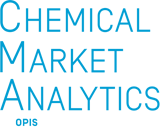Session Details
Aromatics & Derivatives: Pushing through a Feedstock Transition
After a year of weak demand and residual global excess capacity, mainly in mainland China, 2023 represented the low point of the business downcycle for many aromatics products. The strong gasoline market helped many aromatics producers sell intermediates with high octane into the gasoline blend pool and achieve margins unavailable in the core products. Even though global GDP growth is expected to be moderate in 2024, it should be a year of improved aromatics and fiber margins as limited new capacity is expected online worldwide. However, there is much uncertainty about the strength of the gasoline crack spreads and octane values and many aromatics suppliers will want to have the flexibility to shift reformate use for gasoline or aromatics extraction. At the 2024 World Chemical Forum, Chemical Market Analytics’ experts will elaborate on the opportunities and challenges seen for the aromatics markets in 2024, from feedstocks to end-use applications, and share their views of the key drivers affecting the longer term outlook in each value chain.
Benzene is the key building block for many aromatics value chains, but the global market is perennially beset by supply challenges that cause regional cost disparities, inconsistencies in trade flows and fluctuations in downstream consumption. The market is regularly influenced by changes in refining and steam cracking, whilst production of other aromatics remains critical to forward supply. Chemical Market Analytics will provide the long-term outlook for the global benzene markets including regional supply and trade flows. We will also examine the impact created by gasoline regulation, energy transition and the circular economy as well as growth potential in a fast-changing world.
China’s drive to become self-sufficient has added a record amount of new capacity to the market. However, styrene demand is suffering from regulatory bans, pressure from other materials and a slow down in construction. The styrene market needs to right size itself but that’s not easy when some producers are operating for propylene oxide. Styrene producers are adopting new strategies to help survive the market downturn, such as selling EB, controlling production and extending turnarounds. Sustainability is changing the entire styrenics chain so producers must metamorphosize and adapt to the changing environment.
The paraxylene and PTA markets have been deeply affected by the strength seen in gasoline over the last two years, with octane pressure impacting production margins but providing a better outlet for reformate for refinery integrated producers. The overcapacity in paraxylene has not really been felt as volume has been cut back. PTA investments continue in China at a rapid pace providing solid demand and mainland China’s emergence from COVID has given a tremendous boost to the polyester, PTA and paraxylene industries. However, how will market dynamics change when the gasoline market weakens again? Will the capacity come crashing back to the market?
The presentation delves into the dynamic market landscape for ethylene oxide, glycols, and derivatives, scrutinizing the asymmetrical impacts that is disrupting the market equilibrium. We begin by outlining the fundamental role of ethylene oxide and glycols in various industrial sectors, emphasizing their significance in the production of plastics, solvents, and antifreeze, among others. The paper then explores the market trends, focusing on supply-demand disparities and pricing volatility. The key driver of the actual asymmetry, oversupply, is thoroughly examined to understand their short-term and long-term implications on market stability. Additionally, we analyze the ripple effects of these asymmetries on related industries and global trade, driven by short-term disruptions like supply chain bottlenecks or regulatory changes, others are indicative of long-term shifts, potentially reshaping the industry landscape.
Despite a subdued economy, mainland China led tremendous growth of polyester fibers in 2023 amid a spurt of new fibers capacity. This speech will explore how polyester fibers growth will evolve in 2024 when apparel brand and retailers want to increase focus on sustainability while virgin fibers remain far more competitive than recycled fibers.
With the uncertain health of this market and continuous expansions in Mainland China, the nylon industry is reaching a point for players to consider whether to bail or stay in the game. This presentation comprehensively analyzes which nylon players/markets could stand a chance to get across the finish line from cost, demand, and supply perspective.
The global isocyanates markets have ever been a dynamic growth engine for domestic producers and even outperformed global GDP. The petrochemical landscape and its growth patterns have changed with energy costs rising and private consumption hit hard after the Covid run. MDI and TDI markets must evolve to meet new demands in an ever changing petrochemical landscape via decarbonization and energy transition from refinery to crackers down to isocyanates. This speech will explore the challenges for MDI and TDI, and it will present market outlooks to answer how it will support the important feedstock needs of the polyurethane industry going forward.
Two years of massive expansion into the propylene oxide chain paired with a soft global economy have led to an imbalance between PO and thus polyurethane supply and demand situation. Exit strategies for some, regional disadvantages, traditional exporters becoming importers and technological as well as environmental push will and are topics to be addressed going forward. The polyurethane industry however is and will remain the frontrunner as soon as global economy picks up in particular to address topics around reducing carbon footprint, concentrating on circular economy catalyzing demand for insulation. This speech will address these and other PO market considerations to help you prepare your formula for strategic success.
Duncan Clark
Vice President, Global Aromatics & Fibers Team Lead Chemical Market Analytics by OPIS
Read BioPrem Chitkara
Executive Director-Polyester Fibers and Glycols & EO Derivatives Chemical Market Analytics by OPIS
Read BioSteven English
Executive Director, Europe Aromatics Chemical Market Analytics by OPIS
Read BioPeter Feng
Executive Director, Americas Styrenics Chemical Market Analytics by OPIS
Read BioJames Nicholson
Executive Director, America Benzene, Pygas & Reformate Chemical Market Analytics by OPIS
Read BioDavid Potter
Executive Director, EMEA Phenolics and Americas Isocyanates Chemical Market Analytics by OPIS
Read BioAshish Pujari
Vice President, Asia Aromatics | Global Polyurethane Feedstocks | Polyester Fibers & Feedstocks | Polyester Stream Chemical Market Analytics by OPIS
Read BioRoberto Ribeiro
Executive Director, Global Ethylene Oxide | Ethylene Glycol Chemical Market Analytics by OPIS
Read BioPhillip Smee
Director Polyurethane Feedstocks Chemical Market Analytics by OPIS
Read BioTobias Spyra
Director, EMEA Styrenics & Polyurethane Feedstocks Chemical Market Analytics by OPIS
Read BioMeiko Woo
Executive Director, Global Nylon Fibres & Feedstocks Chemical Market Analytics by OPIS
Read Bio










